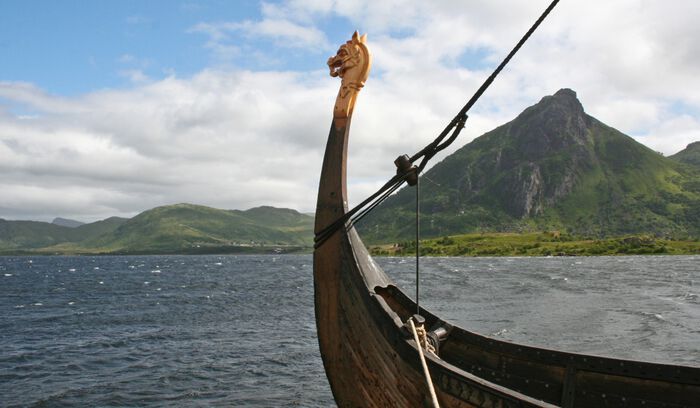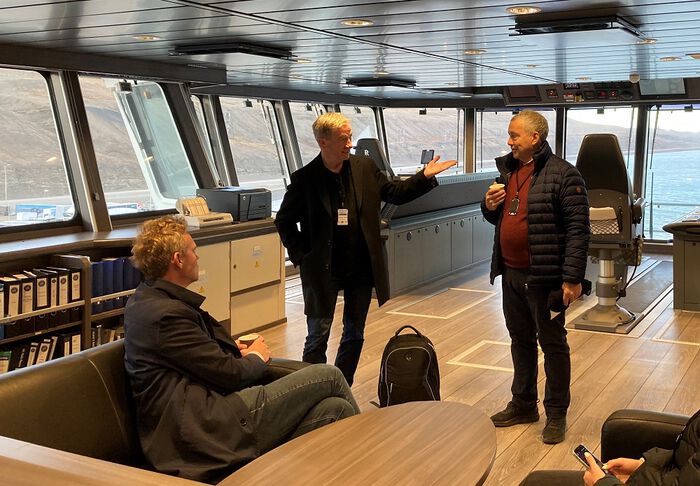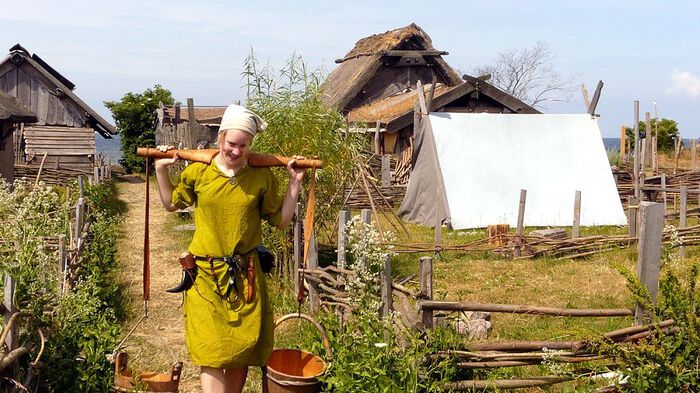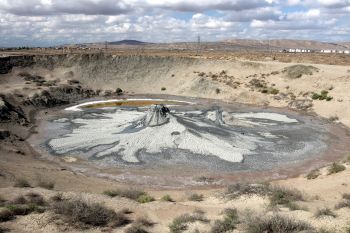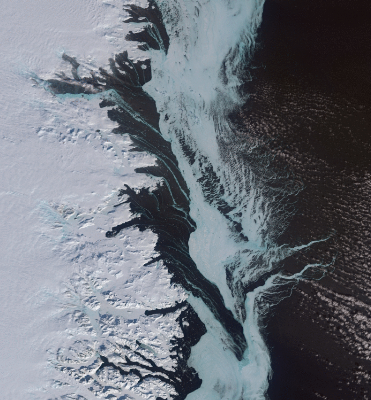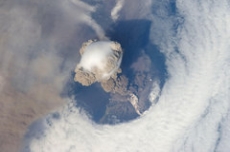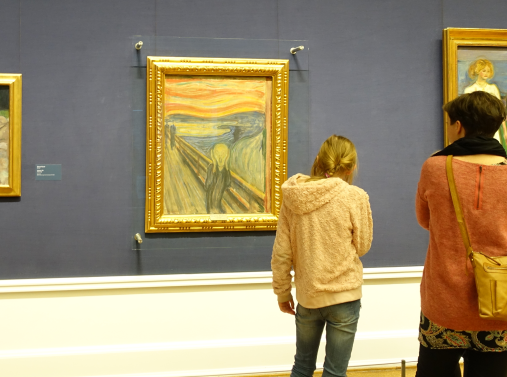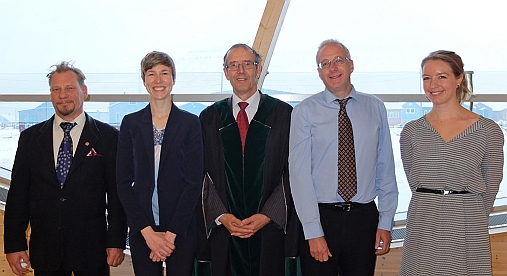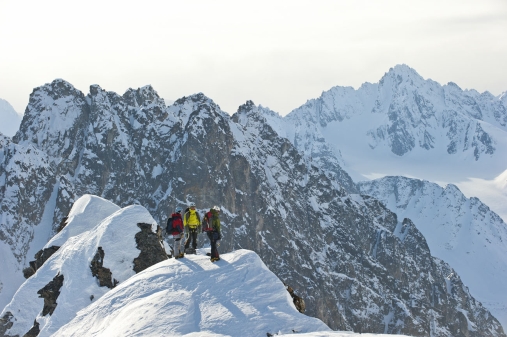New technology and drones from the DroneLab@UiO are used in a research project CircAgric-GHG for measurement of ruminant methane emissions at the ILRIs Kapiti farm in Kenya. Doctoral Research Fellow, Alouette van Hove was interviewed by ILRI in May.
Outreach 'In media'
Research news and 'In media' articles where researchers from the Department of Geosciences, University of Oslo have contributed. The list is not exhaustive and postings are only for news and 'In media' articles in English.
On the Yamal and Gydan peninsulas in Siberia, scientists have long wondered about the mystery of 8 craters. The enormous craters have been seen in Siberia over the past 15 years. Scientists from University of Oslo: H. Hellevang, M. Ippach, S. Westermann and M. Nooraiepour may now have solved their origin. A new research study has got a lot of attention in media from around the world.
A new film and TED talk lesson entitled 'The continents are moving. When will they collide?' was launched in the TED-Ed teaching lessons at YouTube in the beginning of March 2023. The lesson is by Jean-Baptiste Philippe Koehl, Researcher at Dept of Geosciences and CEED and so far the lesson has been seen by over 360 000. See the lesson and two more here!
The research project VIKINGS is one of the highlighted projects using the Norwegian High-performance computing (HPC) infrastructure SIGMA2 in an annual report for the HPC services. Project leader, Prof Kirstin Krüger has been interviewed in an article about how they use the HPC infrastructure and the research findings so far in the project.
In the autumn of 2022, the first research cruise of the Norwegian GoNorth expedition was carried out. One goal of the expedition is, among other things, to explore the geological prehistory of the formation of the Polhavet/Arctic Ocean. Professor Jan Inge Faleide, University of Oslo is part of the management of GoNorth. Faleide was interviewed by Geoforskning.no, read the interviews here.
The French couple Krafft lived and died for a deeper understanding of the mysteries of volcanoes. The documentary Fire of Love describes their life and work. At the film display in Cinema Vega on 1 September at Oslo Pix, Olivier Galland, researcher at the Department of Geosciences, was invited to introduce the film to the audience.
Outreach article in Norwegian about a SNOWDEPTH drone fieldwork at the high mountain area in Western Norway published in the news portal at University of Oslo – titan.uio.no.
A collection of minerals and mineral descriptions – The Planetary Terrestrial Analogues Library (PTAL) will help scientists understand the surface of Mars. The resource is now ready for ESA's next Mars rover mission (probably postponed until 2028), and is physically located at UiO. The PTAL project is led by Professor Stephanie Werner, who was recently interviewed by sciencenorway.no.
Farming practices of the Vikings and their ancestors could provide inspiration for resilient food systems today. A new study from the VIKINGS project, GEO, UiO exploring how Scandinavian societies adapted their agricultural activities in a period of European history marked by stark climate fluctuations. Read about their study in 'News by AGU'.
Differences in heat loss on Earth may have an impact on how the tectonic plates are moving, according to a new study.
Several cone-shaped formations and lava-like flows on the surface of Mars have puzzled scientists over years. An European research team, suggests that the formations may be after mud volcanoes. Researcher Adriano Mazzini from CEED/GEO has participated in the study, which has got much attention in the international news after the study was published.
The covid-19 pandemic lockdown gives researchers a window to study how pollution affect the climate. One of the researchers is Trude Storelvmo, Professor of meteorology at Department of Geosciences. Storelvmo has over several years done research on how aerosols and skies affect the climate. Read interview in Scientific American.
In the news: In early November we could read an article about iceflow in the Artic published on the news section for the ESA webpages. It describes the research carried out in the ICEFLOW project with Bas Altena and Andreas Max Kääb, Dept. of Geosciences.
Doctoral Research Fellow Krister Karlsen at CEED and GEO has received attention for his research on water that is slowly drained into the Earth by subduction. There is more water entering the interior of the Earth than what comes out, but the time horizon is very long. Read interview in the New Scientist.
The eruption of Mount Pinatubo in 1991 had a significant impact on climate, decreasing global mean temperature by about 0.5°C. Like the famous eruptions of Krakatau (1883) and Tambora (1815), Pinatubo is located in the tropics, which has been considered an important factor underlying its strong climate forcing. Now researchers find that explosive extratropical eruptions can have a strong impact on the climate as well.
Glaciers are in constant motion forward, but now and then some of them have very fast movements forward - a surge - and loose much of its ice mass in the front. Scientists try to understand the physics and the icemass loss in these movements. Four of University of Oslo's experts in glaciology and remote sensing at Department of Geosciences are now interviewed in an article in the scientific journal Science about claciers and surging events.
There are many glaciers in the Norwegian landscape. They are at risk of decline drastically and perhaps disappearing due to a warmer climate. Especially exposed are the glaciers in Northern Norway and the smallest glaciers. Interview with Solveig Havstad Winsvold in the newspaper Morgenbladet in the column 'The doctor answers' in June.
“Scream”, Edvard Munch’s painting, shows a blood-red sky over the Oslo fjord. “Suddenly the sky became red as blood” - Munch describes this event as scaring. Was it pollution particles from a volcano eruption which caused this red sky? Three Norwegian meteorologists offer an new hypothesis: was it mother-of-pearl clouds Munch saw and painted in 1892.? The article in the journal Weather has got huge media attention.
The new article from Trond H. Torsvik et al about Mauritia - the lost continent in the Indean Ocean gets a lot of attention from the press worldwide. Latest is an article in the German weekly news magazine Der Spiegel, one of Europe's largest publications of its kind.
CEEDs Researcher and geologist Grace Shephard has been in duty on board on the Swedish icebreaker Oden, and explains how they collect core samples from the sea floor.
The American magazine The New Yorker recently followed a research team collecting data from the Chhota Shigri Glacier in India. In the article they followed among others postdoc Markus Engelhardt, Department of Geosciences in his work to check the camp’s weather monitor, which had been planted four months earlier, and recorded temperature, solar radiation, and barometric pressure. The aim of the study is to find out if and how fast the glacier is melting.
Glaciers on Svalbard behave very differently from other glaciers worldwide. They advance massively for some years and then quickly retreat – and then remain quiescent for fifty to a hundred years – before they once again start to advance. Professor Jon Ove Hagen at Department of Geosciences, University of Oslo is recently interviewed in Apollon about Svalbards pulsating glaciers. The article has got attention by several international research websites.
There are many areas with permafrost both in Norway and Iceland, although the two countries have different climate and soil conditions. Models show that land areas with permafrost are about 8% of the total landsurface, but with somewhat smaller percentage for Norway's part. Researchers at the Department of Geosciences have studied permafrost over time both in Norway and Iceland. Professor Bernd Etzelmuller recently has contributed with two articles with status reports for permafrost for Norway and Iceland in the WWWs The Circle.
In October deffended Heïdi Sevestre at Department of Geosciences and UNIS her PhD thesis. In her PhD she has investigated the global distribution of surge-type glaciers and uncovered differences in geometry between normal and surge-type glaciers. Read about her research in an article at UNIS webpages.
Svalbard`s mountains are older than we previously believed. On research expeditions to get rock samples of the Spitsbergen`s peaks the researchers found mountains that was ancient and little prone to erosion. The study is published in Nature Geoscience with first author Endre Før Gjermundsen, many colleagues from UNIS and others. Otto Salvigsen, Department of Geosciences, is co-author of the article.



